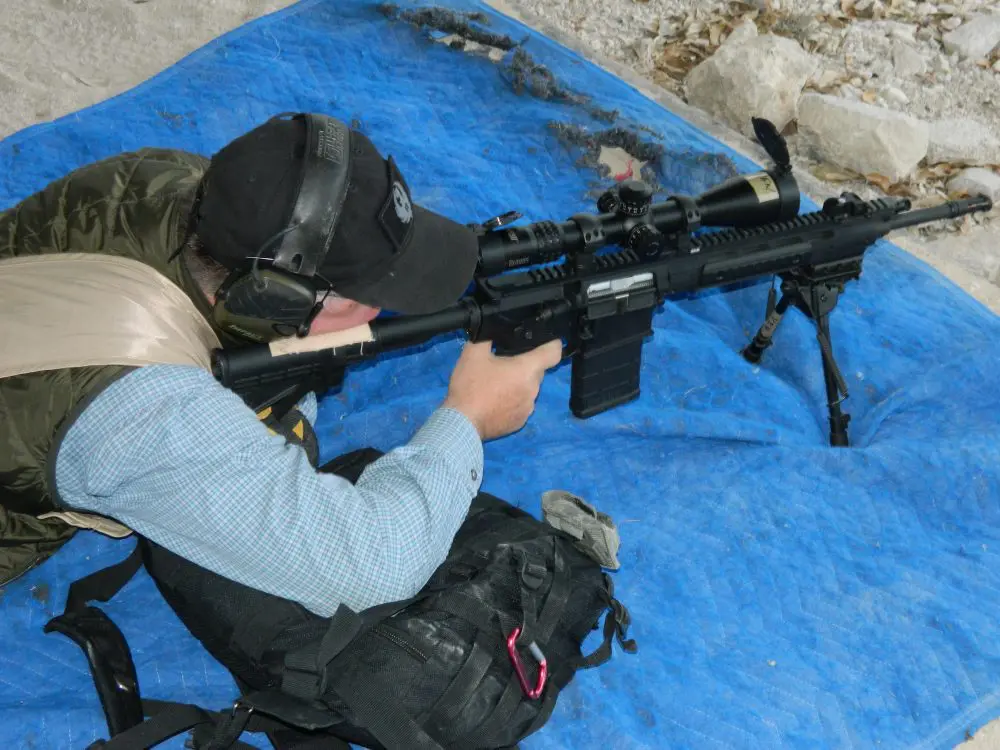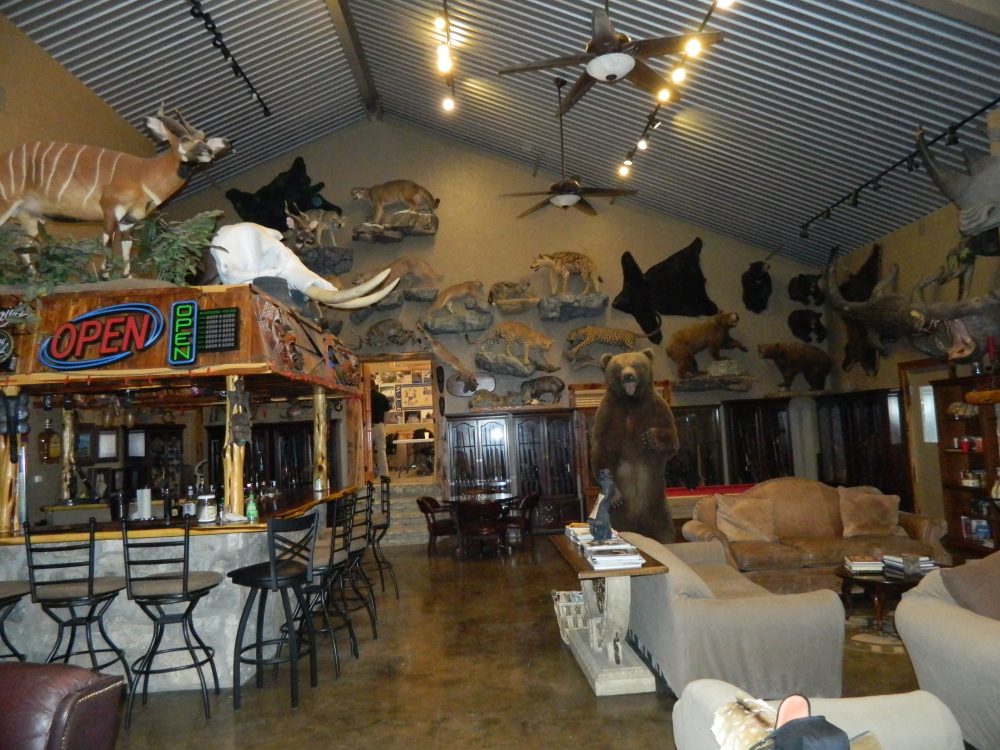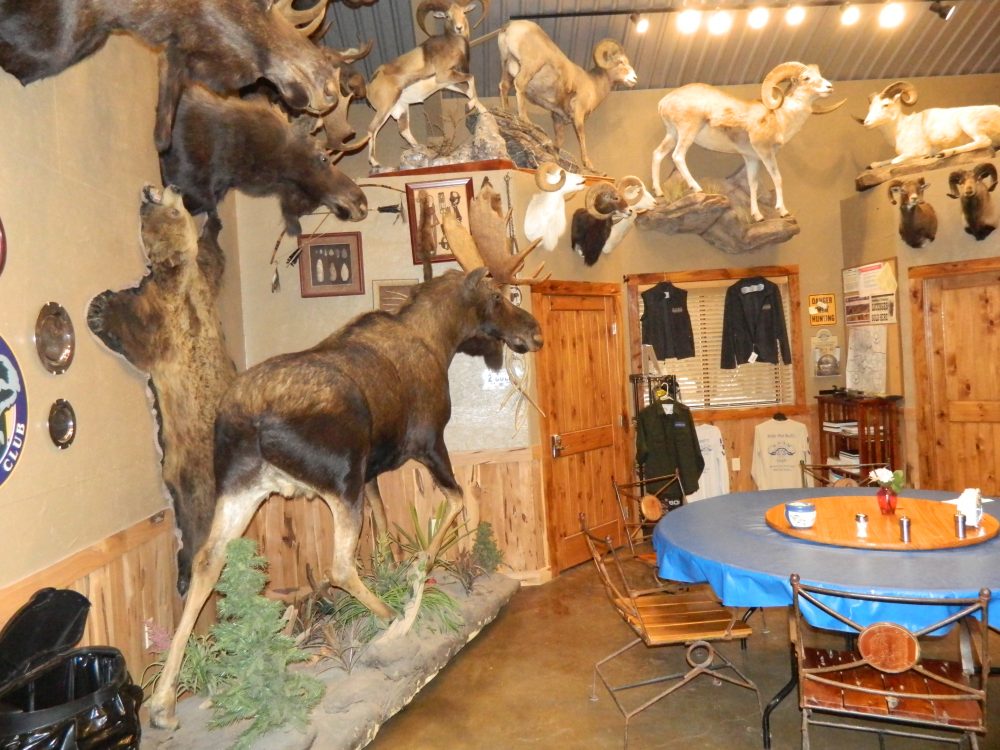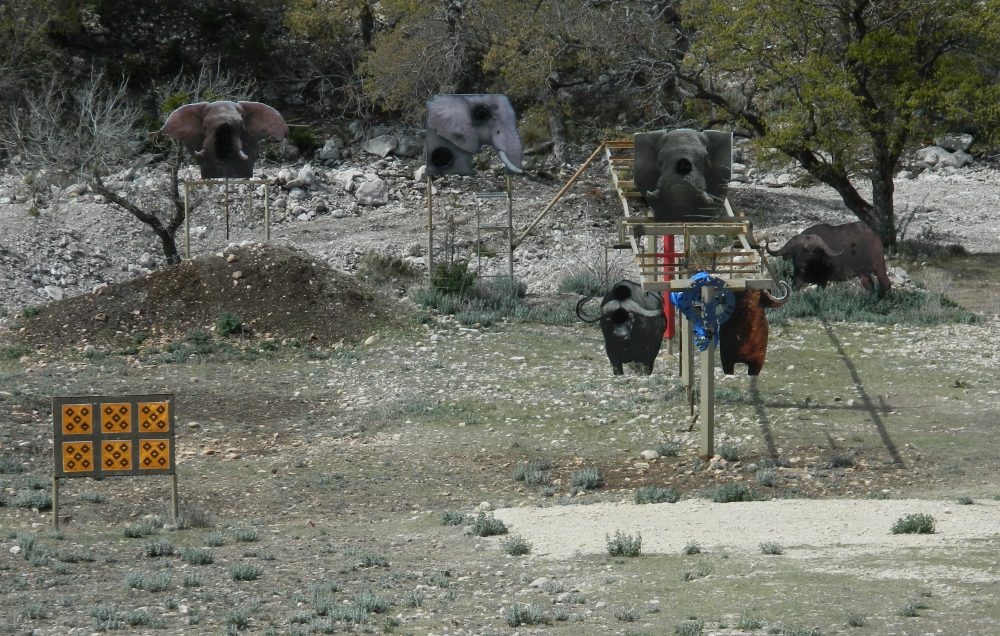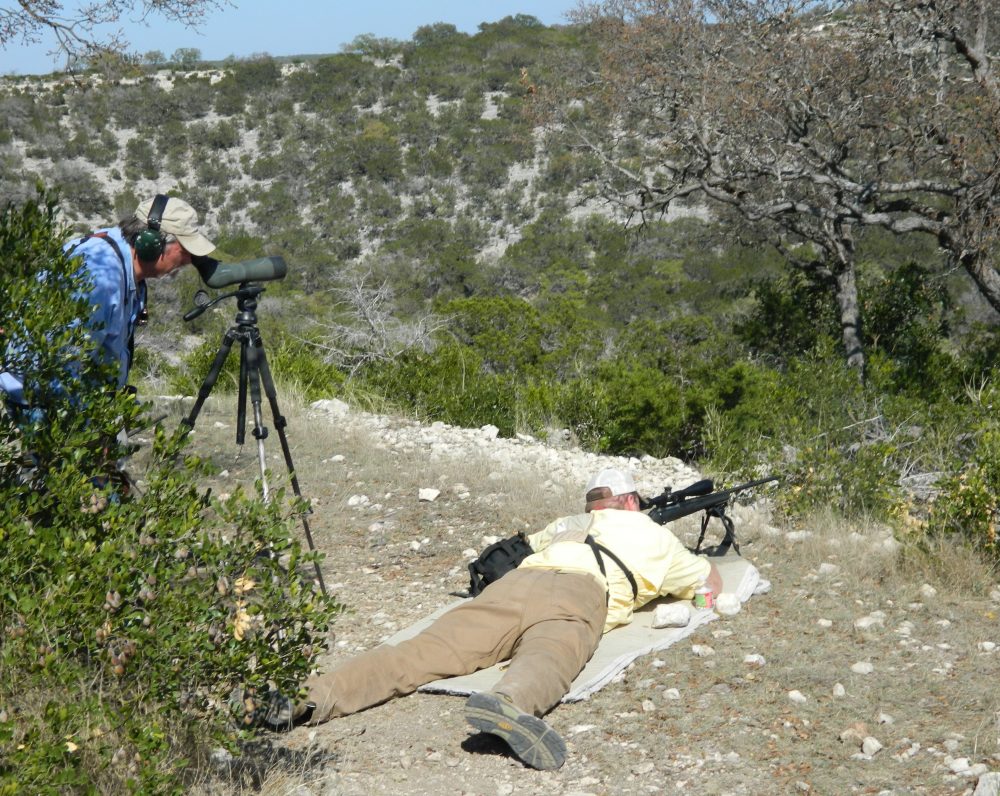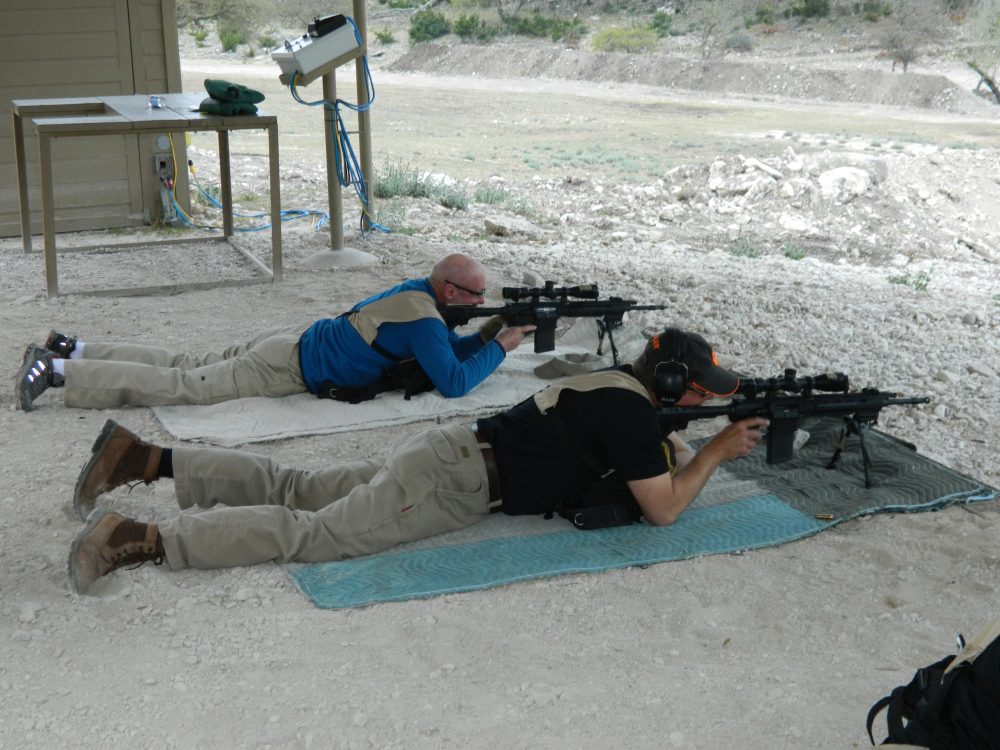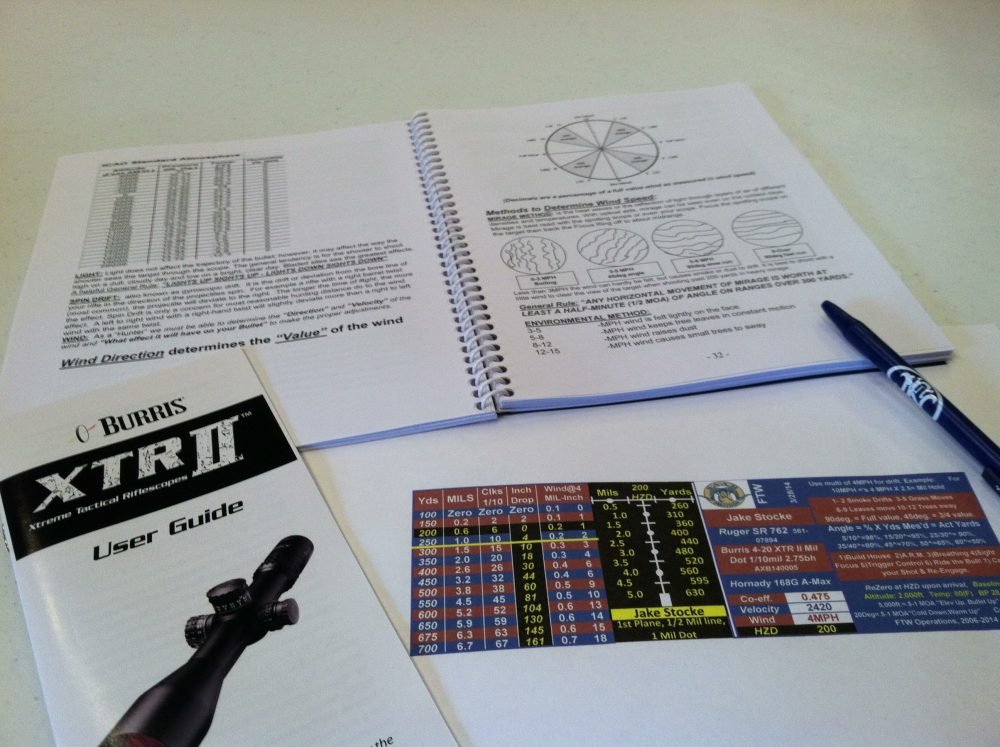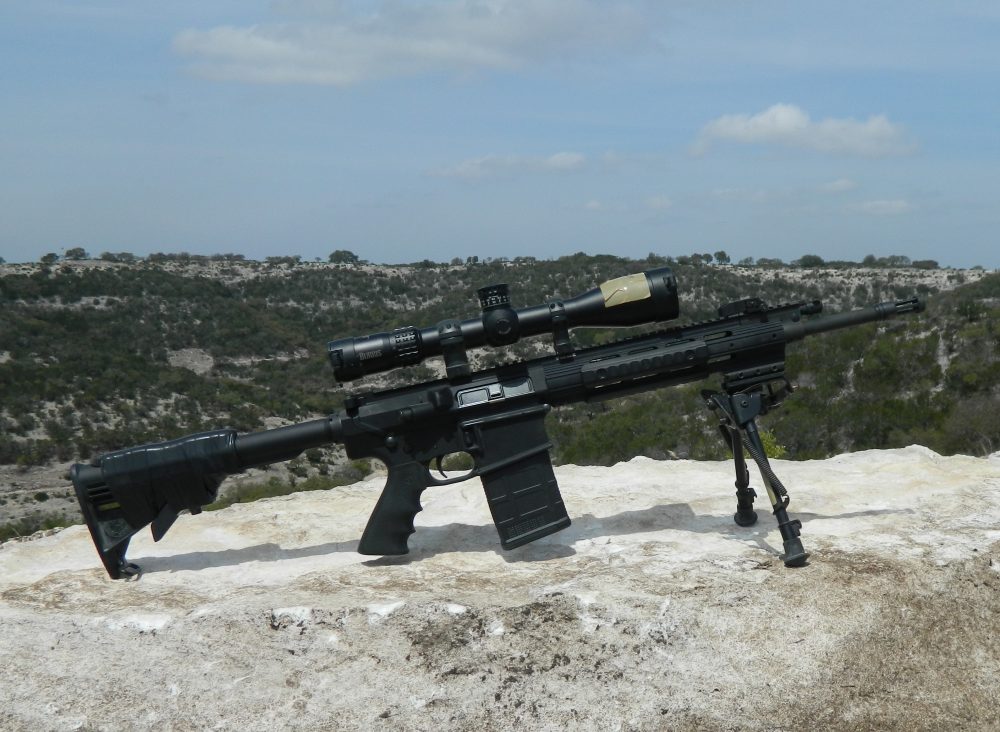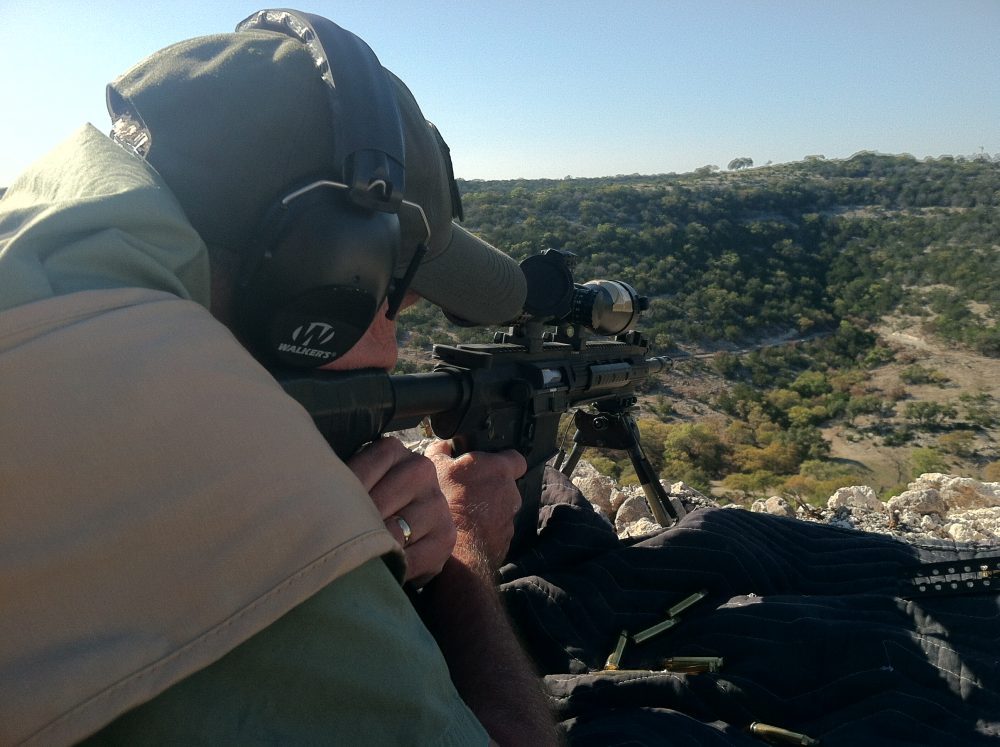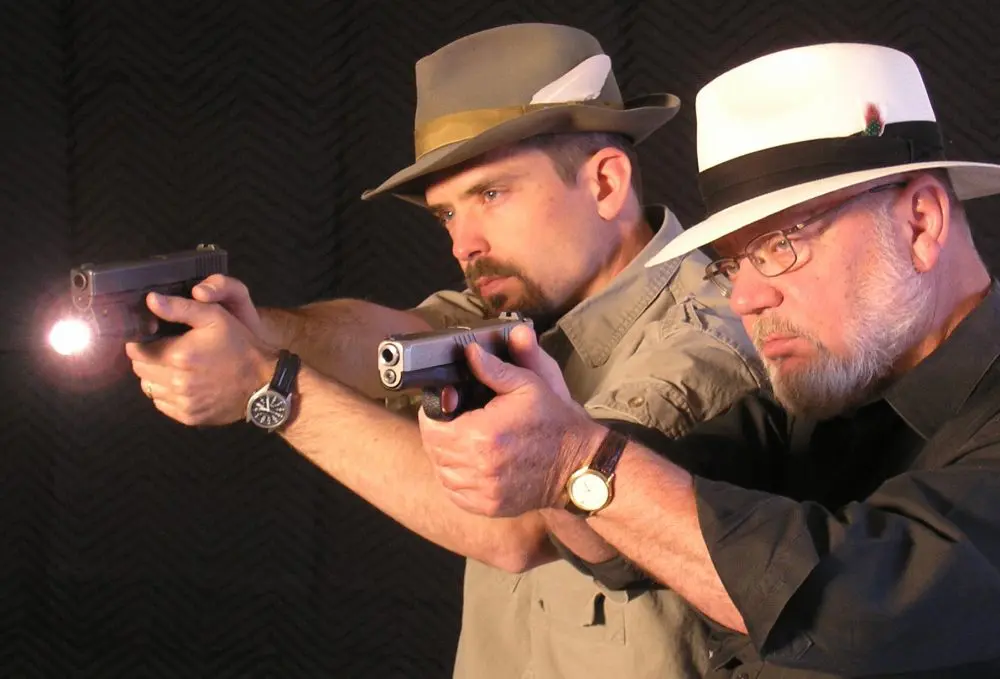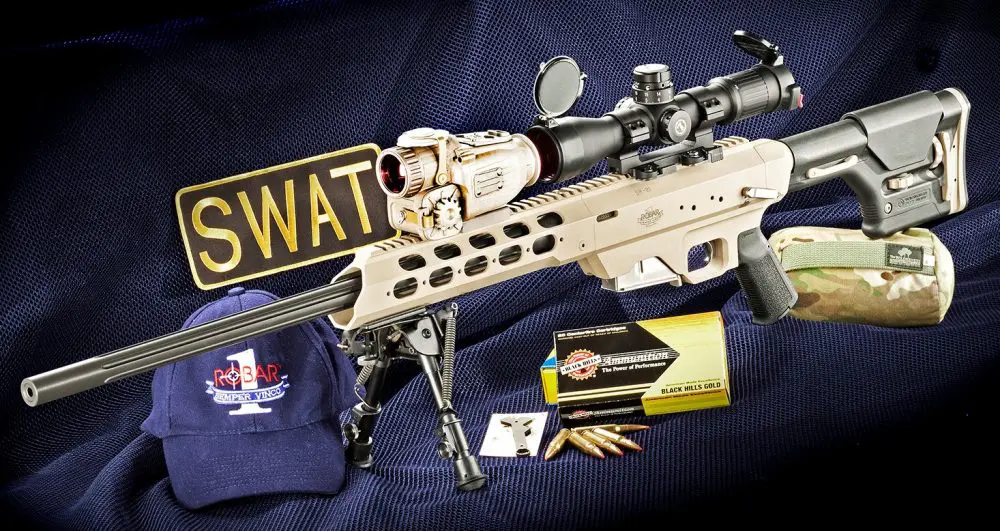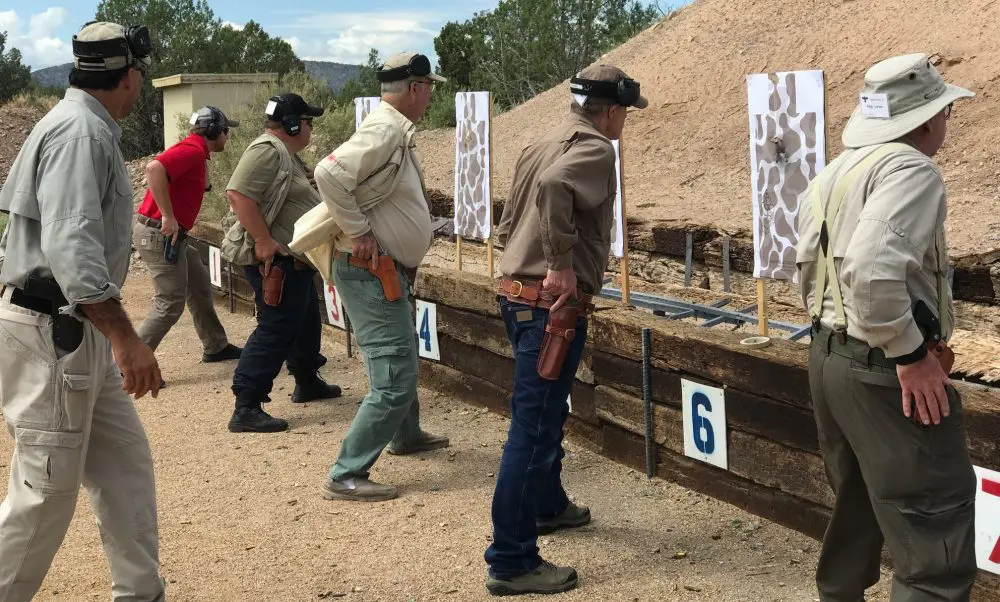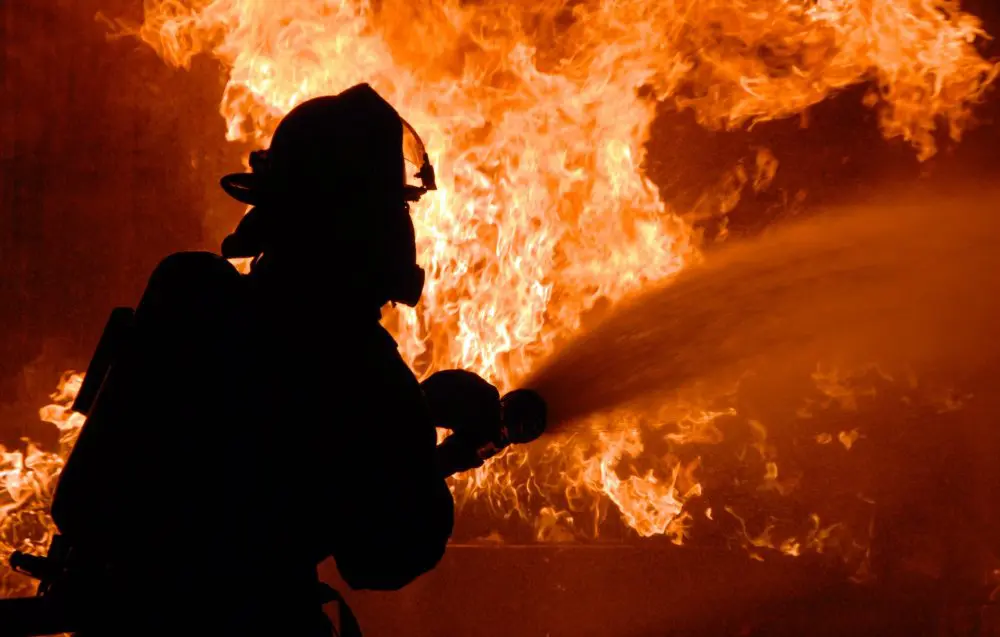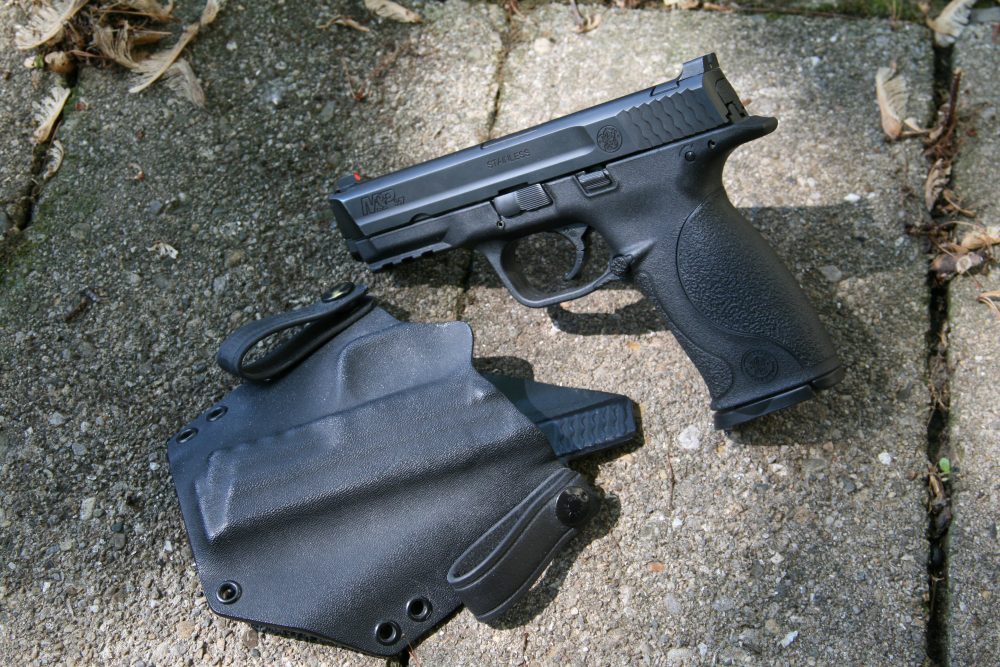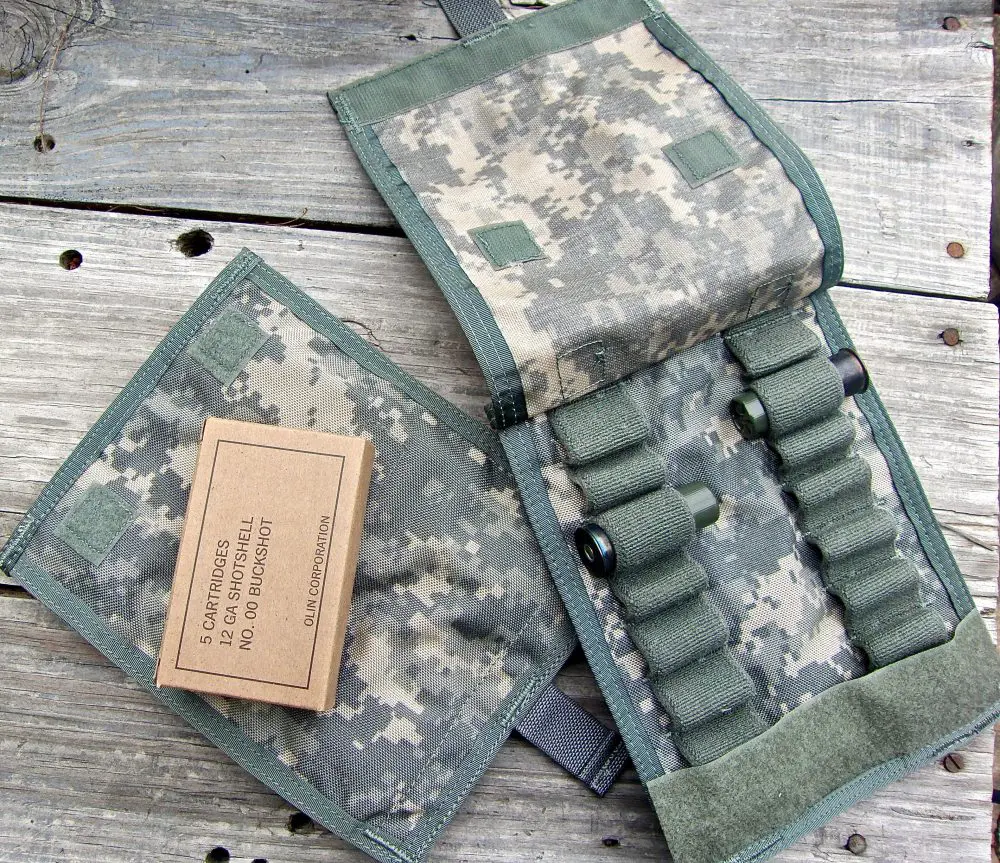“Find something you love to do and you’ll never have to work a day in your life.”— Harvey MacKay
I don’t work…
Recently I returned from a four-day long-range shooting course. The event was sponsored by Sturm, Ruger & Co and held at the FTW (Fallon Trophy Whitetail) Ranch near Barksdale, Texas. The goal of the course was to shoot the Ruger SR-762 at distances thought by many to be extreme for an AR-type rifle.
Lounge at FTW Ranch
Table of Contents
FTW RANCH
FTW comprises a team that operates hunting adventures and the SAAM (Sportsman’s All-Weather All-Terrain Marksmanship) Training courses on the FTW Ranch, which encompasses 12,000 acres of rugged hills and valleys in the southwestern region of the Texas Hill Country.
The ranch has 15 ranges located throughout the property, most of which are covered. Some targets are as close as 200 yards, and some go beyond 1,000 yards.
The ranch’s lodge is an 8,000-square-foot building that includes a lounge, dining area, and modern classroom complete with huge LED TV. Trophies of animals from all over the world adorn the walls of the lounge and dining area. It is the most impressive collection I have ever seen. Students and guests are housed in seven well-appointed private cabins.
Even the dining area has trophies on display. Meals served at FTW Ranch rivaled what I have had in very expensive restaurants.
CLASS BEGINS
On the first morning, we were greeted in the classroom by Tim Fallon, founder and owner of FTW. Tim introduced Doug Prichard, who would be our lead instructor. Doug passed out SAAM manuals and immediately began getting into the subject matter. Each student was also given a range card with dope for 100 to 700 yards, dial-in come-ups and holdover info, plus a manual on the Burris XTR II scope we would be using. Finally, FTW Ranch provided each student with a PAST Super Mag-Plus ambidextrous recoil pad.
Doug went into the basics and terminology of scopes, and explained the difference between Minute of Angle (MOA) and Milliradian (Mil Rad). One MOA equals one inch at 100 yards, and a Mil Rad equals 3.6 inches at 100 yards. So far, so good.
But when he started talking about ballistic coefficient, angle/degree to cosine multiplier and wind calculations, I started to get a headache, and the eyes of one long-time friend looked as glassy as the eyes of the mounted heads in the lounge.
After this four-hour block of instruction, my mind was set somewhat at ease by Dave Pienaar, a regional sales manger for Ruger. Dave, a former USMC Scout Sniper, told me that what we had just been given would amount to two weeks or more in Scout Sniper School and things would come together once we got on the range and started turning turrets.
Charging dangerous game targets was fun and challenging.
ON THE RANGE
The rifles we used were standard Ruger SR-762s. I had recently had this rifle in for test and evaluation (DOWNRANGE DOMINANCE: Ruger SR-762, February 2014 S.W.A.T.), so I felt quite comfortable with it. Each rifle was marked with the student’s name to ensure they would get the same rifle every day.
The rifles were equipped with the new Burris XTR II, 4X-20X-50mm scope. This scope is of the first focal plane type, has an illuminated reticle and 3.5- to four-inch eye relief that all but eliminates getting “kissed” by the ocular lens. It is capable of 90 MOA elevation adjustment and 55 MOA windage adjustment. As I would find out, this much adjustment is critical for true long-range shooting.
We used Hornady 168-grain A-MAX ammunition exclusively, and it proved both accurate and reliable.
FTW Lead Instructor Doug Prichard spots Mike Martin for an 1,100-yard shot across the canyon. Mike nailed it.
The rifles had been given a rough zero by FTW staff before our arrival, so the first order of business was for each student to obtain a zero for his issued rifle. In my case, this took six rounds—three to slightly change the zero, and three more to confirm. Due to the mechanical offset (bore line/sight line), I could not initially get a proper cheek weld, so I improvised a riser out of pieces of foam and electrical tape.
The class was split into two groups and sent to two different ranges. The end of the first day found my group engaging targets from 100 to 700 yards with an instructor calling wind for us. Dave Pienaar was correct: once we actually started using the gear, everything began to make sense.
As the course progressed, we began to call our own wind corrections, with the patient instructors correcting us as necessary. I learned more about reading wind and mirage in four days than I’d ever known before in all my years of shooting.
Ruger’s Ken Jorgensen confirms zero on his SR-762.
TRAINING DAY TWO
On the second day, my group went to a range that had nine-inch steel targets from 250 to 650 yards. Since I had made hits at 700 yards the day before, I figured this would be a cakewalk. Was I wrong!
The targets the first day had been in a relatively straight line. On TD2, many of the targets were at steep angles and so I had to take the angles into consideration before pressing the trigger. Only one target—the one at 500 yards—was more or less in a straight line across the canyon from my position. After shooting one target, we were given only a few seconds to shoot, acquire a second target, shoot, and then acquire and shoot a third target—all at different distances and elevations.
On this range it sank in that calling wind is truly an art. After we had all taken our shots, an instructor drove downrange and popped a green smoke grenade at about 300 yards, followed by a red at around 450, and another green near 600.
The wind at the first green smoke was blowing at about five miles per hour left to right. The red smoke was going straight up (indicating no wind at that location), and at the last green it was blowing right to left at around 12 mph. It’s important to not only know the wind speed and direction at your shooting location, but everywhere in between you and the target and how the wind will affect the drift of the bullet.
Dave Spaulding (top) and Mike Martin fire at moving targets on the Lodge range.
1,000-YARD HIT
The farthest distance I hit was 1,000 yards on a 12-inch plate. In a perfect world, that would require ten mils of elevation on the scope, which is what I dialed up to. But in the real world, there are things like wind, humidity, and elevation.
My first shot was low, and my spotter advised me to come up two mils. My particular scope “bottomed out” at ten mils, so I held two mil dots down in the reticle. The next shot was just off to the left. The third shot hit the plate at three o’clock about two inches in from the edge. That was good enough for me.
Students received an SAAM manual, individualized range card, and Burris XTR II manual. Photo: Jake Stocke
I didn’t realize how much holdover I had until I sat down with a calculator afterwards. One mil at 100 yards is 3.6 inches, so 12 mils is 43.2 inches at 100 yards. At 1,000 yards, that translates into 432 inches (36 feet)!
On Day Three, we fired on moving targets and also on FTW’s charging Cape Buff and elephant targets at the Lodge range. I’ll likely never be able to hunt in Africa, but I can say I shot a charging buffalo…
On Day Four, we were driven around the entire ranch and shot at unknown distance targets out to around 750 yards. The event concluded with a great steak dinner, prepared to order by the FTW staff.
SR-762 used by author, who improvised cheek riser with pieces of foam and electrical tape to allow better cheek weld.
SUMMARY
In total, each shooter fired between 500 and 600 rounds during the four days. For some reason my scope would not hold zero, forcing me to reconfirm zero three times. I was told this was the first batch of XTR II scopes, and I gave the serial number of the one I was using to the Burris rep to have their technicians take a look at it.
To become better at estimating range, I have done it and then used a laser rangefinder to confirm how close I was. I plan on using my Kestrel wind meter in a similar manner to estimate wind.
Like many shooters, I have owned several mil dot scopes. And probably like many shooters, I never really understood how to use them, zeroing it at 100 or 200 yards and calling it good. I’m a much better end user now that I understand and appreciate them.
Hansen takes aim at 700-yard target across a canyon. Photo: Jake Stocke
The SR-762 rifles ran as reliably as the one I’d had for evaluation, confirming my earlier impression of it being an extremely dependable rifle. I am not aware of any malfunctions experienced by any shooter present. That’s saying something when you consider Ruger ordered in 6,000 rounds of ammunition and we used almost all of it.
If you want a great AR-type .308 rifle, the SR-762 is hard to beat. And if you want to learn how to employ it at long range, I heartily recommend the facility and instructors at FTW Ranch.
SOURCES:
FTW Ranch
(830) 234-4366
www.ftwoutfitters.com
Sturm, Ruger & Co., Inc.
(203) 259-7843
www.ruger.com
Burris Company
(970) 356-1670
www.burrisoptics.com
Hornady Mfg. Co.
(800) 338-3220
www.hornady.com
